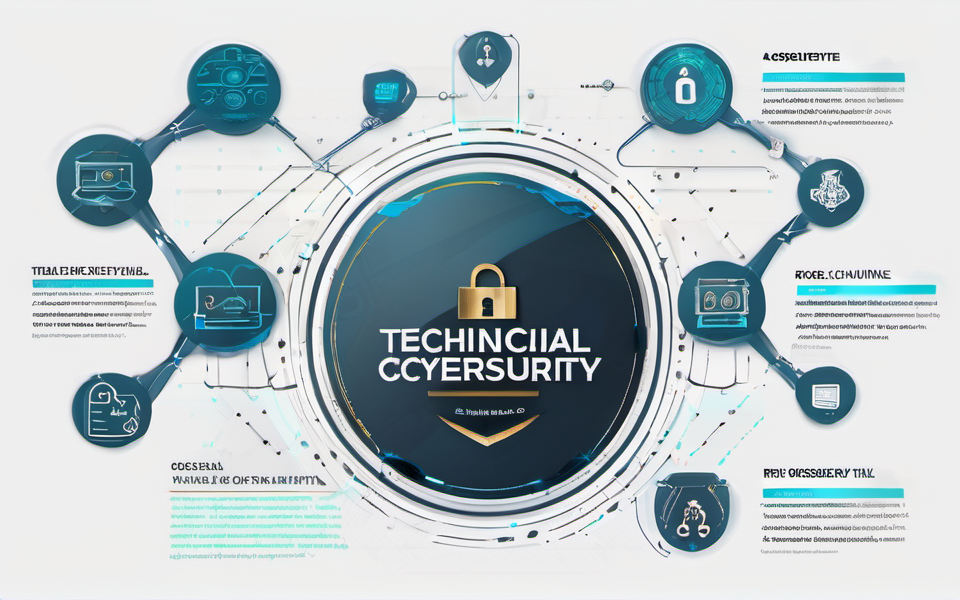Imagine a world where cyberattacks are a thing of the past. No more data breaches, no more stolen identities, no more ransomware nightmares. This may sound like a futuristic fantasy, but with the rapid advancement of technical cybersecurity solutions, we’re closer to this reality than you think. Gone are the days of relying solely on traditional security measures like firewalls and antivirus software. Today, we’re entering a new era of sophisticated cybersecurity solutions that leverage cutting-edge technologies to proactively defend against evolving threats.
Embracing Innovation: The Power of Technical Cybersecurity
The modern cyber landscape is dynamic and constantly evolving, posing an unprecedented challenge to traditional cybersecurity strategies. Gone are the days of static, reactive defense. Instead, we need to adopt a proactive, dynamic approach to combat these advanced cyber threats. That’s where technical cybersecurity solutions come into play.
Artificial Intelligence (AI): The Forefront of Defense
AI is rapidly changing the game in cybersecurity. By leveraging machine learning algorithms, AI-powered systems can analyze vast amounts of data to detect suspicious activity, identify potential threats, and even predict future attacks. Imagine security systems capable of identifying an attack before it even happens. This isn’t just science fiction – AI is already making significant strides in cybersecurity.
Threat Intelligence: Staying Ahead of the Curve
The key to effective cybersecurity is knowledge. By utilizing threat intelligence, organizations can access a constant stream of up-to-the-minute information about emerging cyber threats, attack trends, and attacker tactics. This intelligence enables proactive security measures, enabling businesses to anticipate and defend against known threats, before they strike.
Automation – Boosting Efficiency and Reducing Human Error
Gone are the days of tedious manual tasks and human error when it comes to security. Automation empowers security teams to automate repetitive tasks like vulnerability assessments, threat analysis, and incident response. This not only increases efficiency and speed but also eliminates human error that could otherwise expose an organization to vulnerability.
Why Technical Cybersecurity Is The Future
The future of cybersecurity is built on innovation and adaptation. By embracing these technological advancements, we can proactively defend against emerging threats, secure valuable data, and protect our online lives.
Benefits of Technical Cybersecurity:
- Increased efficiency and productivity: Automated processes free up valuable time for security teams to focus on high-priority tasks.
- Reduced risk of breaches: Advanced systems proactively detect and mitigate threats before they can cause damage.
- Improved threat detection: AI-powered systems analyze data for subtle anomalies and patterns, identifying attacks that might otherwise go unnoticed.
- Enhanced compliance: Automated security processes streamline compliance efforts, helping organizations meet industry standards and regulations.
Building a More Secure Future
Technical cybersecurity is not just about protecting individual devices or networks. It’s about creating a robust and adaptable security infrastructure for the future.
Think of it like this:
| Traditional Security | Technical Cybersecurity |
|—|—|
| Reacting to attacks after they happen | Proactively preventing attacks from happening |
| Manual processes prone to errors | Automated processes reducing human error |
| Focused on static protection | Adaptable to constantly evolving threats |
By integrating cutting-edge technology into our security strategies, we can move beyond reactive security and build a truly resilient digital future.
Key Takeaways:
- Technical cybersecurity solutions are essential for combating evolving cyber threats.
- AI, threat intelligence, and automation are key components of the future of cybersecurity.
- By embracing technical cybersecurity solutions, businesses can enhance security, improve efficiency, and stay ahead of the curve.
- The future of cybersecurity lies in proactive, dynamic approaches and the integration of technology.




